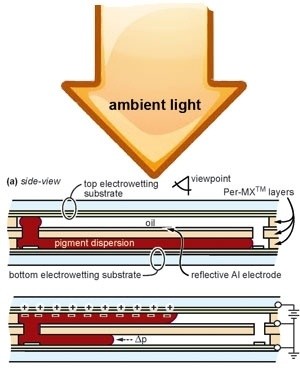
The University of Cincinnati has recently announced a new "e-Display design", which includes a massive breakthrough for electronic devices called, Electrofluidic Display Technology (EFD). Now, this is where you put your lab coat on... finally, you can be Gordon Freeman!
Got it on? Good, here we go, EFD is created through the collaboration between U of C, Dupont, Sun Chemical and Gamma Dynamics.
Ok, you can take it off now - it was getting a bit warm with it on.
This new display tech is promising excellent readability in bright sunlight, high contrast color and the ability to show high-speed content, all while massively reducing it's power consumption. To better understand what EFD is all about, there is some info you should know (put the lab coat back on now):
"Before describing UC's new "zero-power" design, it's helpful to understand the basic design of existing electronic devices.
"Think of an e-reader as a bunch of micro-sized buckets (or pixels) of mixed black and white paint, where you can move the black and white pigments to the top or the bottom of the bucket. Just like mixing paint, the process is not fast. That's somewhat close to how today's e-readers work. The slow movement of these particles forms the text and grayscale images you see on an e-reader. These devices use practically no power unless you are switching the screen. It's actually making use of ambient light to make the particles visible. When the user turns the device on or off or switches a page, he's electronically "mixing the paint" (or pixels) to create the overall image or text page.
"Faster, color-saturated, high-power devices like a computer's liquid-crystal display screen, an iPad or a cell phone require high power, in part, because they need a strong internal light source within the device (that "backlights" the screen) as well as color filters in order to display the particles as color/moving images. The need for an internal light source within the device also means visibility is poor in bright, natural light.
"The new "zero-power" design combines the best features of both these kinds of devices. It requires low-power because it makes use of ambient light vs. a strong, internal light source within the device."
In a nutshell, this new display tech uses ambient light to light the actual display through a mirror effect from electrodes compressed between layers of oil and a pigment dispersion layer.
Estimates are pointing to this type of tech being available within 3 years at limited capacity, and hopefully 5 years for robust use (mobile). While this sounds like a long time, the benefits of this technology will be worth it. Current smartphones barely last a day with decent use, with EFD tech you could be looking at your EFD-based device for days, if not weeks from a full charge.

